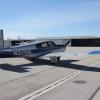Flaps on take-off?
-
Members Online
- bluehighwayflyer
- Danb
- jamesyql
- Tommooney
- TeshDar
- Floyd
- redbaron1982
- GeeBee
- AndreiC
- dkkim73
- Mufflerbearing
- richardbrochu27
- Mooney-Shiner
- Matt103187
- Rick Junkin
- ziggysanchez
- hammdo
- PT20J
- Ibra
- bwevans
- BrandonA
- philiplane
- Stan
- jplistowski
- Medicpilot
- katzhome
- N201MKTurbo
- Parker_Woodruff
- toto
- Pinecone
- ArtVandelay
- 201er


Recommended Posts
Join the conversation
You can post now and register later. If you have an account, sign in now to post with your account.